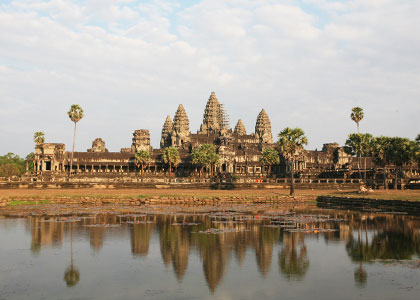Why Was Angkor Wat Abandoned?
Angkor Wat, once a city and temple complex built during the peak of the Angkor Empire, is now only a tourist site. Even though it has been recognized as a UNESCO World Heritage Site and contributes massively to Cambodia’s tourism, it still generates much curiosity as to how this city fell out of favor.Why did this ancient city become just a place for tourists and travelers? Why don’t people live here anymore? Why was Angkor Wat abandoned? Over the course of this blog, we will try to uncover the reasons why the people of a once-great kingdom chose to move from the ancient capital of the kingdom of Angkor.
1. Trade with China
As the powers of the Angkor Empire waxed and waned going into the 13th Century, trade started to become a very important aspect of the Khmer people. The country that offered the best trade opportunities to them was China.However, Angkor Wat was not a port city. Traders who wanted to make the most of the available trading opportunities had to shift to a location that was nearer to the sea, making trade feasible. That’s why slowly and steadily, traders abandoned Angkor Wat in search of greener pastures, with Phnom Penh being the traders’ first choice.
|
|
|
2. The Shift from Hinduism to Buddhism
Another answer to the question “Why was Angkor Wat abandoned?” is the fact that as the Angkor Empire gradually weakened, the religious dynamic in the region changed quite drastically. It was during this time that most of the area that makes up modern-day Cambodia started converting to Theravada Buddhism.
You might say that this does not answer the question “Why was Angkor Wat abandoned?” However, you need to remember that the great temples within the city of Angkor Wat were all Hindu temples. When the people chose Buddhism as their religion, they chose their own path and decided to abandon Angkor Wat.
3. Overpopulation
This is not a typical answer to the question “Why was Angkor Wat abandoned?” However, it is true. Even though Angkor Wat was considered a big city in those times, it was still insufficient for a population that was constantly growing.
4. Drought
History suggests that Cambodia had several drought crises in the 13th, 14th and 15th centuries. These droughts kept mounting fresher challenges to tackle for the people of Angkor Wat. While the ruling elite did do their best to develop and maintain a highly efficient water system in those times, it just wasn’t enough to save them from feeling the ill effects of the droughts.The most significant droughts to have affected the Angkor Wat population came during the 14th and 15th centuries, which led to total water system failure, leading to a mass exodus of people from the city.
5. The Increasing Negligence of the Ruling Class
As problems started to stack up one after the other for the population of Angkor Wat, the final nail in the coffin for the Angkor civilization was probably the lack of initiatives taken by the ruling elite.The droughts left the water system within the complex completely crippled. However, there was no real recovery from the droughts as evidence suggests that the rulers simply did not do enough to recover the water system from its woes.
In time, their gaze shifted towards maritime trade, as that was much more profitable than keeping Angkor Wat functional.
6. The 16th Century Ayutthaya Invasion
The Ayutthaya Empire wreaked havoc in Cambodia in the late 16th century and their invasion led to massive displacements of the local population. Siem Reap is one of the places that had to bear the brunt of the inversion, forcing people in the area to abandon Angkor Wat in search of safety.As Siem Reap is just a few kilometers away from Angkor Wat, the remaining people in the temple complex fled as well, which pretty much wrapped it all up for the once-heralded Angkor civilization.
So, overall, it’s safe to say that the fall of the ancient Angkor civilization happened due to more than just one reason. A lot of sources may tell you that the invasion of the Ayutthaya Empire was the only reason as to why was Angkor Wat abandoned.
However, as we have seen in this blog, there are several other reasons as well, which played their part equally in rendering the Angkor Wat temple complex abandoned.
So all in all, this is how we can sum up all the reasons why was Angkor Wat abandoned:
• A growing population that could not fulfill its requirements due to space and resource constraints in Angkor Wat.
• The ambition of traders as well as the ruling class to reap the rewards of trading opportunities with China.
• Natural crises such as droughts that led to failures in the water system.
• The 16th-century invasion of Cambodia by the rulers of the neighboring Ayutthaya Kingdom.
Today, the Angkor Wat temple complex stands tall as one of the world’s most iconic religious monuments. The ruins of the temple attract tourists from all around the world each year, who visit Cambodia just to get a glimpse into the glorious past of the ancient Angkor civilization.



